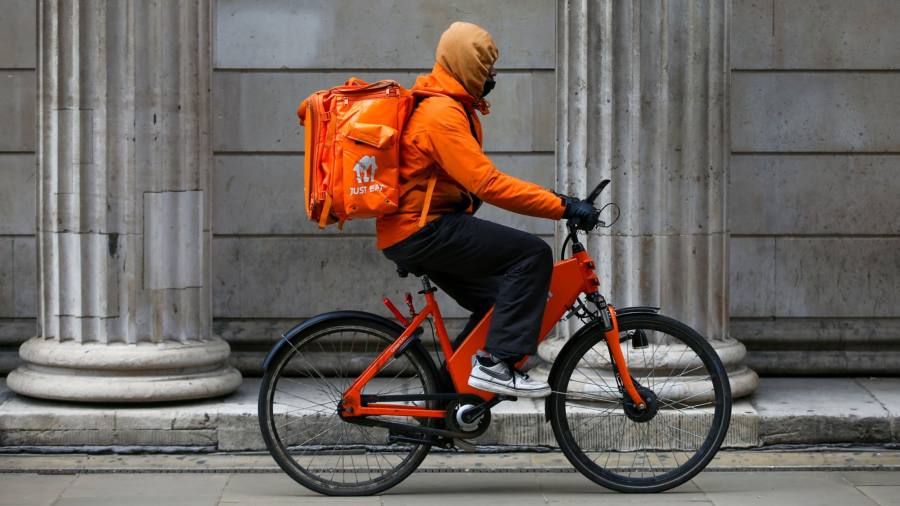
The cost of living crisis has hit order growth at food delivery companies Deliveroo and Just Eat Takeaway, as inflation compounds an industry slowdown after last year’s lockdown restrictions eased.
Deliveroo on Friday blamed “tough market conditions” for a 1 per cent year-on-year drop in orders globally for the three months to September. It also saw a “slightly more pronounced” decline in monthly active customers than its usual seasonal fluctuations, down from 7.8mn in the second quarter to 7.3mn in the third.
Earlier this week, Just Eat Takeaway said group orders declined 11 per cent year-on-year.
Both companies said that the order declines were offset by growth in customer spending on their apps, as restaurants raise their prices and delivery fees rise.
Even so, Deliveroo warned that growth in gross transaction value for the full year would be at the lower end of its previous guidance, between 4-8 per cent in constant currency.
Will Shu, Deliveroo chief executive, pointed to a divergence in consumer behaviour. While it is “quite clear that . . . there are people that are struggling out there”, Deliveroo was also seeing that “the more affluent a consumer, the higher the engagement is on the platform”.
Jitse Groen, chief executive of Just Eat Takeaway, told reporters on Wednesday that while the end of Covid restrictions since last year accounted for the “lion’s share” of its fall in orders, “we do believe that part of the trend is caused by a more difficult environment for consumers”.
Restaurants are raising prices by “a lot”, he added. “Especially in Europe, prices are increasing quite a bit,” Groen said. “I think delivery is getting quite expensive in the UK. That’s going to be a bit of a challenge.”
However, he said it was a “misconception” that inflation would reduce orders materially, because Just Eat offers a wider range of cheaper takeaway outlets than its rivals.
Rising food prices have been a key driver of inflation in the UK, particularly in recent months as fuel prices have fallen. Food and non-alcoholic drink prices rose by 14.6 per cent in the 12 months to September, the Office for National Statistics reported this week. That is up from 13.1 per cent in August and is believed to be the highest rate since April 1980.
Food delivery apps have come under “huge pressure” this year to show investors they can turn a profit, said Peter Backman, a food industry consultant.
To boost earnings, some apps, including Deliveroo, have raised fees at the same time as restaurants have increased menu prices.
But Backman warned this tactic could backfire.
“Squeezing the customer right now is not a good idea,” he said.
He added: “People aren’t going to casual dining chains in the numbers that they were and that’s only going to get worse.”
Delivery apps are already seeing that in their numbers. Shu said that restaurants that have marked up their prices “more aggressively” because of inflation are seeing lower conversion rates than others who have taken a “more measured approach”.